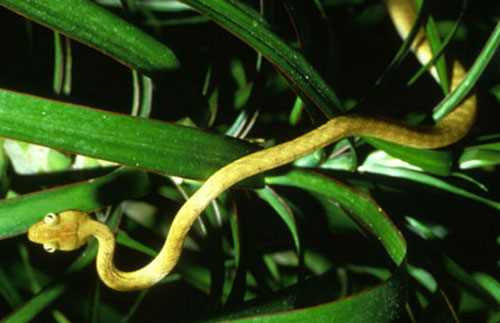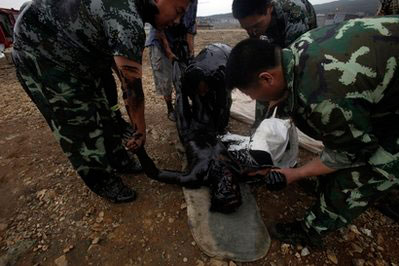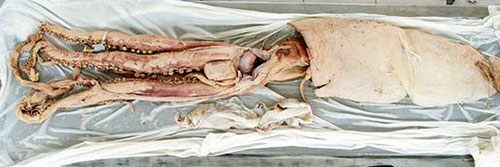2010 - Missed events
National Geographic, the famous American science and discovery magazine, summed up ten environmental and scientific events in the world that many people might have missed in 2010. Khoahoc would like to introduce some interesting facts. .
Kill snakes with bait of poisoned mice

Dead mice stuffed with poison were released by airplanes to the jungles of Guam to kill off the brown snakes that live on trees that grow too fast, which could harm people and soldiers living on the islands. This island belongs to the United States. This strange campaign has been deployed since September.
Oil spill in China

A Chinese firefighter was rescued when he took part in oil scooping near Dalian City, northeastern China in July. It is estimated that 1,500 tons of crude oil had fallen into the Yellow Sea when two oil pipelines exploded in a crowded port city on July 16. This disaster was obscured by the historic oil spill in the Gulf of Mexico, USA.
Anatomy of ink

In the picture, one of the two squid was surgically grafted plastic parts in Germany in March. These two squid were removed with damaged parts in the body and replaced with silicone, now they are 'almost' complete recovery '- New Zealand ink expert Steve O'Shea said.
Dal Lake in danger of exhaustion

In the picture are people selling flowers and vegetables in the early morning on Dal Lake, Kashmir. The lives of these lake-based people, including lake-based tourism services, are seriously threatened by pollution and the lake's water levels are increasingly depleted, according to experts in June. .
The universe is older

Our universe is about 2 million years older than we know it, according to precise measurement methods in a study published in February. This information is obtained after nine years of measuring and photographing Universe. The post of the Wilkinson Microwave Anisotropy Probe satellite was launched in 2001.
Solar for Haiti

Following the success of a 10kW solar cell system installed last year at Boucan Carre Medical Center (pictured), the nonprofit Partners In Health has expanded solar use in Haiti, according to National. Geographic announced in March. This is very useful for the country whose energy infrastructure is heavily devastated by earthquakes.
Simulation of cosmic rays
Short-lived extremely high-intensity sparks can be generated by simulations on computers, according to a study published in August.
- 11 famous historical events thought to be real but were fictional
- Historical events coincide unbelievably
- Striking astronomical events in September
- Ten outstanding natural resources industry events
- 10 outstanding Vietnamese environmental events in 2011
- Vietnamese astronomical events can be seen in February
- Famous mystical events in history
- 20 events proving the 2016 miraculous and extraordinary than you think
- The 2011 event looks from the universe
- 10 outstanding science and technology events 2014
- 10 Vietnamese science and technology events in 2008
- List of medical breakthroughs in 2017
 The most famous scientific failures in history
The most famous scientific failures in history Mysterious genius mechanic and the machine froze time
Mysterious genius mechanic and the machine froze time The son carries the 'bad gene' of genius Albert Einstein
The son carries the 'bad gene' of genius Albert Einstein Isaac Newton
Isaac Newton